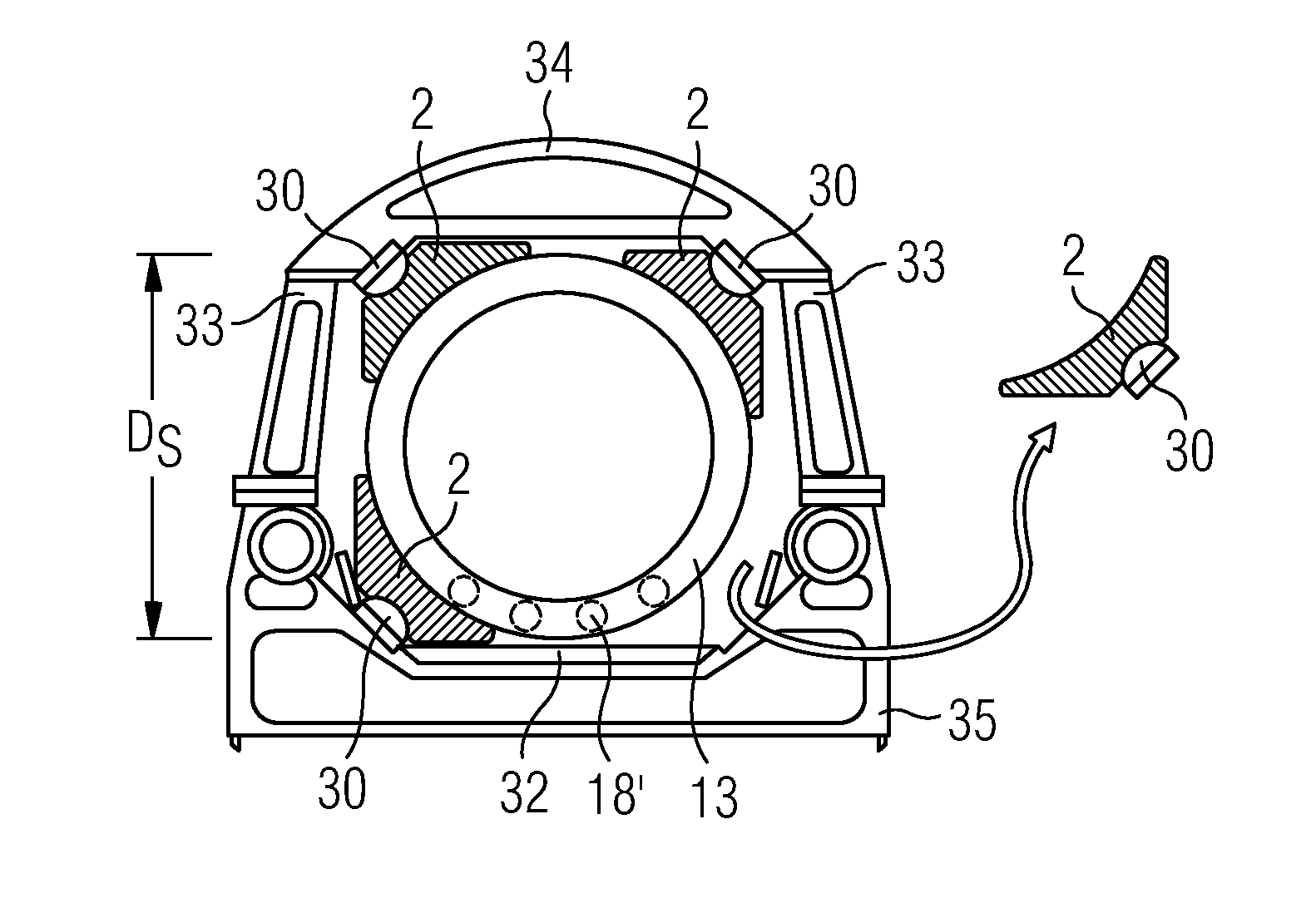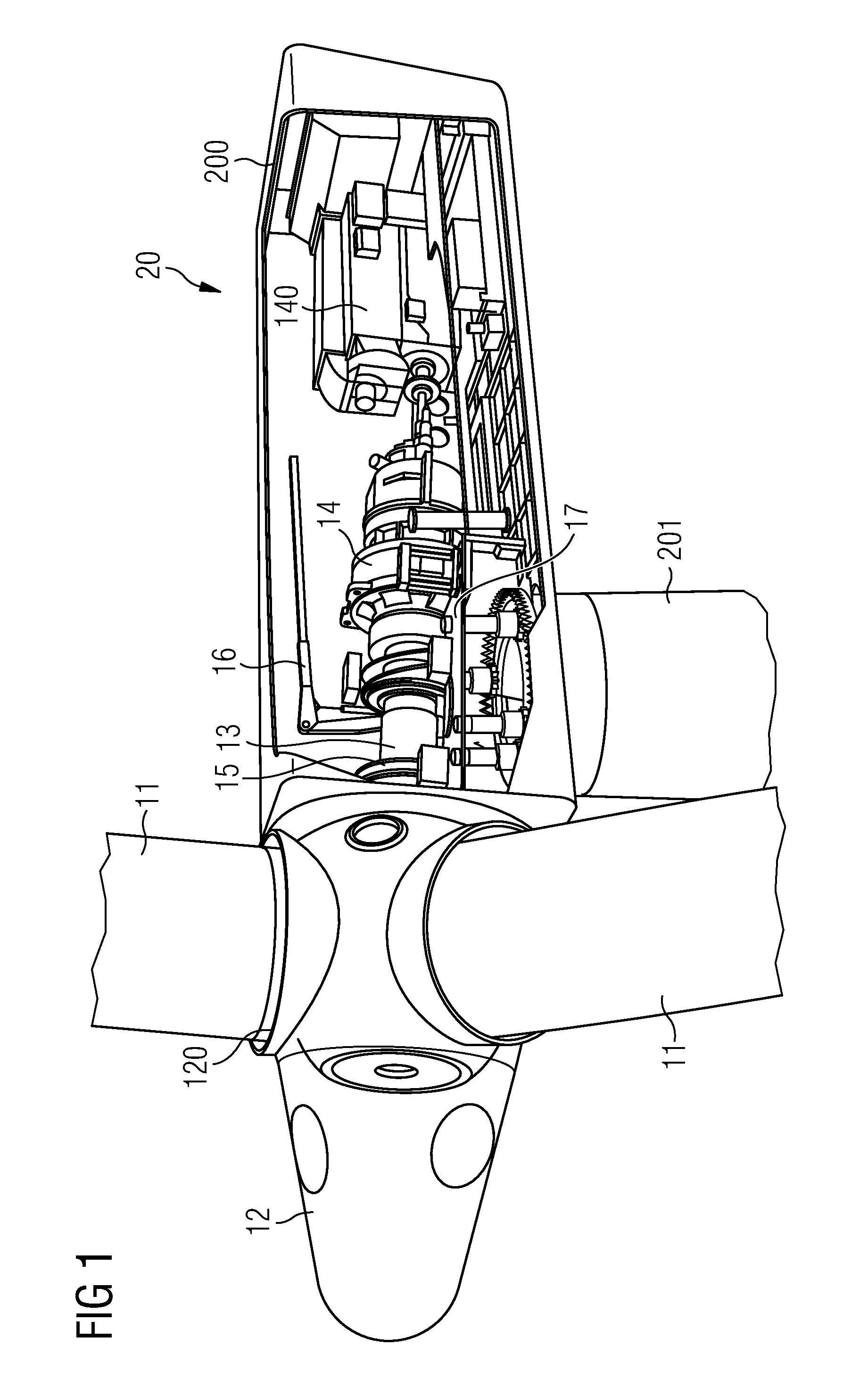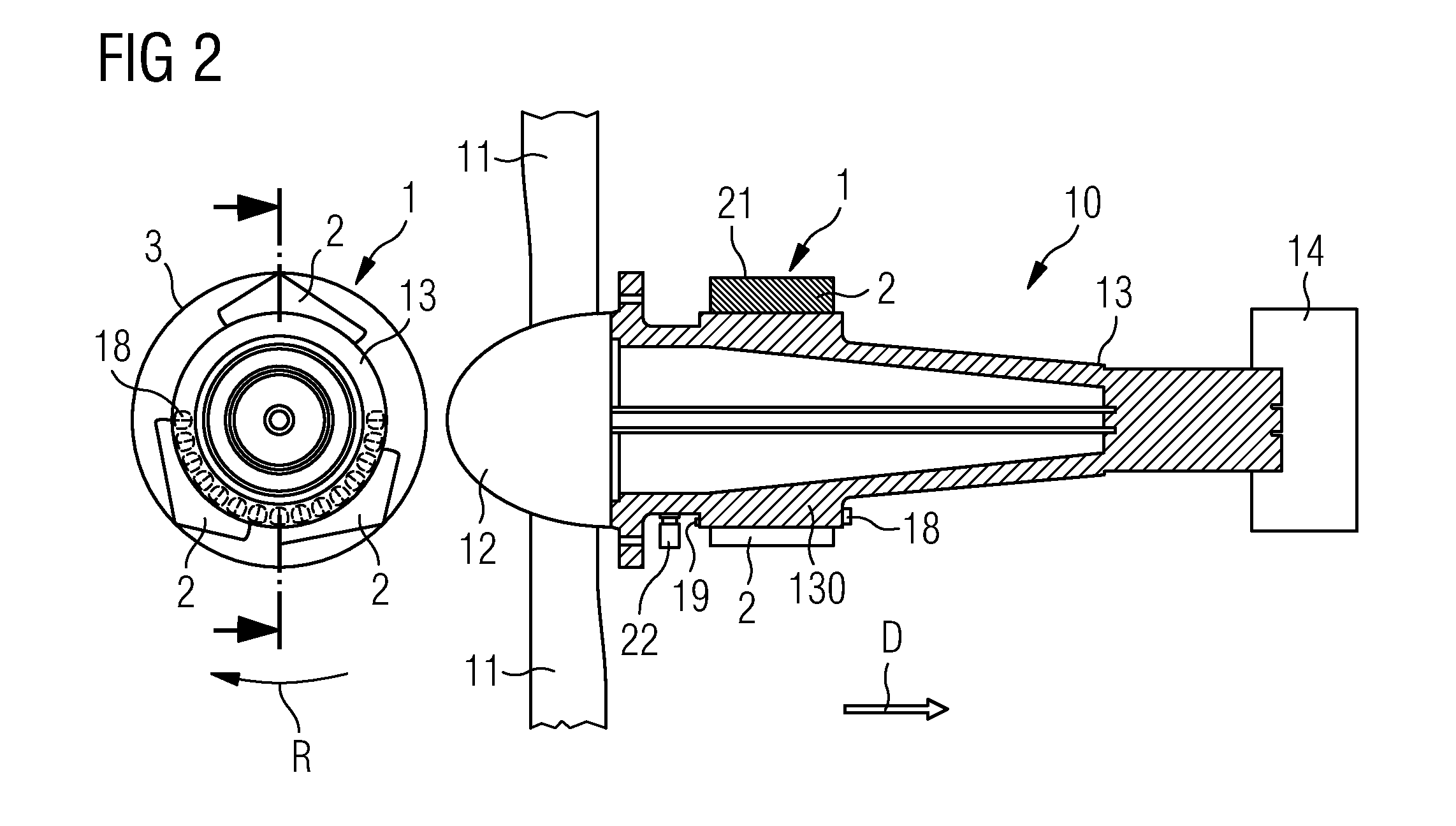Wind turbine main bearing
a technology for wind turbines and bearings, applied in the direction of bearing units, rigid supports, machines/engines, etc., can solve the problems of infrequent start-up or shut-down procedures, very different operating conditions, etc., and achieve the effects of reducing load, convenient removal, insertion or maintenance, and convenient installation
- Summary
- Abstract
- Description
- Claims
- Application Information
AI Technical Summary
Benefits of technology
Problems solved by technology
Method used
Image
Examples
Embodiment Construction
[0047]FIG. 1 shows a schematic rendering of the basic elements of an exemplary prior art wind turbine 20, in this case a Nacelle arrangement of a wind turbine with a drive train and a gearbox in a housing 200 carried by a tower 201. Only the relevant elements are shown for the sake of clarity.
[0048]The blades 11 of the wind turbine 20, usually but not necessarily three in number, are affixed to a hub 12 or spinner 12 by means of a pitch bearing 120 with which the blades 11 can be furled, for example during storm conditions. In normal operation, wind exerts pressure on the blades 11, which cause the spinner 12 and the attached main shaft 13 to rotate. The rotational energy is converted into electrical energy using a gearbox 14 and generator 140. The details of the energy conversion are not of relevance here and therefore will not be explained in further detail. The drive assembly comprising the main shaft 13, gearbox 14 etc. is mounted on a Nacelle bedplate 17. The dimensions of the ...
PUM
| Property | Measurement | Unit |
|---|---|---|
| diameter | aaaaa | aaaaa |
| diameter | aaaaa | aaaaa |
| diameter | aaaaa | aaaaa |
Abstract
Description
Claims
Application Information
 Login to View More
Login to View More - R&D
- Intellectual Property
- Life Sciences
- Materials
- Tech Scout
- Unparalleled Data Quality
- Higher Quality Content
- 60% Fewer Hallucinations
Browse by: Latest US Patents, China's latest patents, Technical Efficacy Thesaurus, Application Domain, Technology Topic, Popular Technical Reports.
© 2025 PatSnap. All rights reserved.Legal|Privacy policy|Modern Slavery Act Transparency Statement|Sitemap|About US| Contact US: help@patsnap.com



